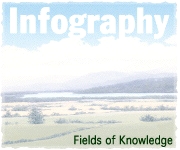
 | |
Motion Pictures -- Japan -- History | |
The following sources are recommended by a professor whose research specialty is the history of motion pictures in Japan. |
· Anderson, Joseph L., and Donald Richie. The Japanese Film: Art and Industry. Expanded edition, Princton University Press, 1982. Originally written in the 1950s and understandably dated, but still useful as the single most comprehensive history of Japanese film history up to the 1950s in one volume.
· Bordwell, David. Ozu and the Poetics of Cinema. Princeton University Press, 1988. A study of the work of the major director Yasujiro Ozu, with an highly informative and provocative introduction.
· Nolletti, Arthur, and David Desser. Reframing Japanese Cinema: Authorship, Genre, History. Indiana University Press, 1992. Reflects the wide variety of research in the field going into the 1990s.
· Bernardi, Joanne. Writing in Light: The Silent Scenario and the Japanese Pure Film Movement. Wayne State University Press, 2001. Book-length study focusing on Japanese silent cinema before 1923, with translations of key scripts from 1918-1921. Recovers a body of lost film and establishes its significance by drawing on original language sources, much of it translated here for the first time.
· Kirihara, Donald. "Reconstructing Japanese Film," in David Bordwell and Noël Carroll, Post-Theory: Reconstructing Film Studies. University of Wisconsin Press, 1996, pp. 501-19. A useful reconsideration of Noël Burch's To the Distant Observer (below). Excellent as a basic introduction to research in the field.
· Kinema Club. Includes criticism, research, teaching (with sample syllabi), links, archives. http://pears.Lib.ohio-state.edu/Markus/
-- SILENT CINEMA --
· Usai, Paolo Cherchi. Silent Cinema: An Introduction. BFI Publishing, 2000, pp. 110-11. For sources in the Japanese language about silent film in particular.
· Bordwell, David. "Visual Style in Japanese Cinema, 1925-1945." Film History, vol. 7 no. 1, 1995, pp. 5-31.
· Komatsu, Hiroshi. "The Fundamental Change: Japanese Cinema before and after the Earthquake of 1923." Griffithiana, vol. 13, no. 38/39, October 1990, pp. 186-93.
· Gerow, Aaron. "One Print in the Age of Mechanical Reproduction: Film Industry and Culture in 1910s Japan." Screening the Past, no. 11, November 2000. http://www.latrobe.edu.au/screeningthepast/firstrelease/fr1100/agfr11e.htm
· Burch, Noël. To the Distant Observer: Form and Meaning in the Japanese Cinema. University of California Press, 1979.
-- GENERAL HISTORY --
· Richie, Donald. Japanese Cinema: An Introduction. Oxford University Press, 1990.
· Hirano, Kyoko. Mr. Smith Goes to Tokyo: Japanese Cinema under the Occupation, 1945-1952. Smithsonian Institution Press, 1992.
· Desser, David. Eros Plus Massacre: An Introduction to the Japanese New Wave Cinema. Indiana University Press, 1988.
· Davis, Darrell William. Picturing Japaneseness: Monumental Style, National Identity, Japanese Film. Columbia University Press, 1996.
· Broderick, Mick, ed. Hibakusha Cinema: Hiroshima, Nagasaki and the Nuclear Image in Japanese Film. Kegan Paul International, 1996.
-- DIRECTOR-SPECIFIC --
· Kirihara, Donald. Patterns of Time: Mizoguchi and the 1930s. University of Wisconsin Press, 1992.
· Yoshimoto, Mitsuhiro. Kurosawa: Film Studies and Japanese Cinema. Duke University Press, 2000.
"The Infography about the History of Motion Pictures in Japan"
http://www.infography.com/content/121235646363.html
© 2009 Fields of Knowledge
Essex, Iowa 51638-4608 USA